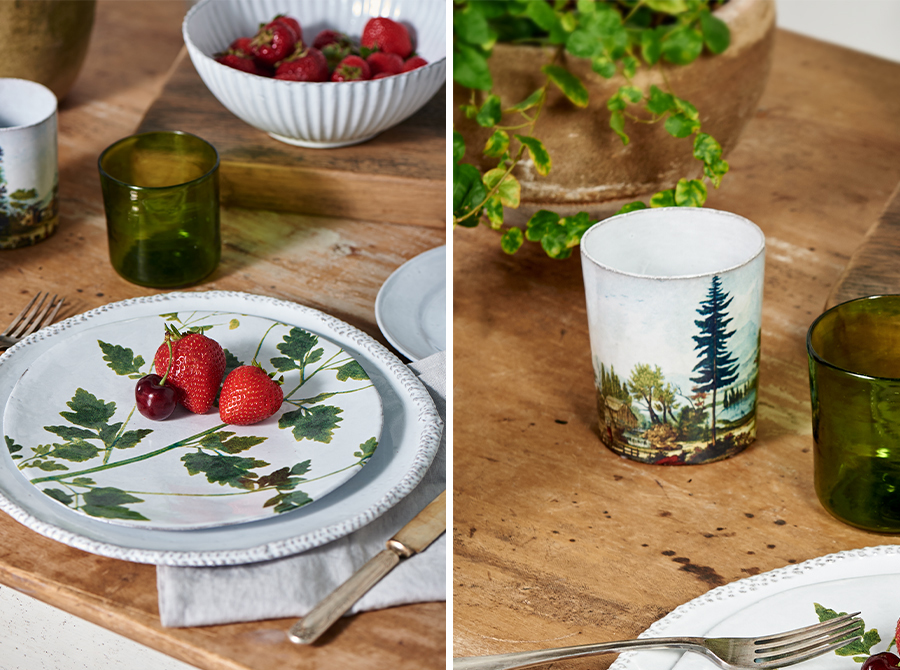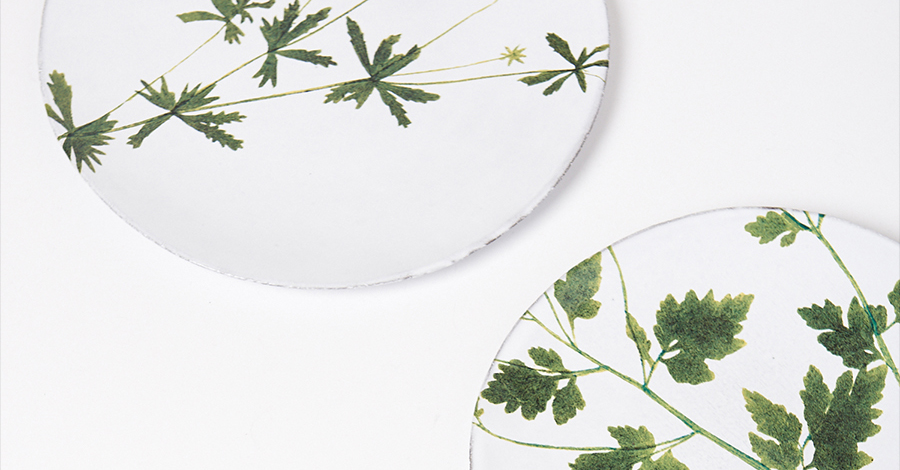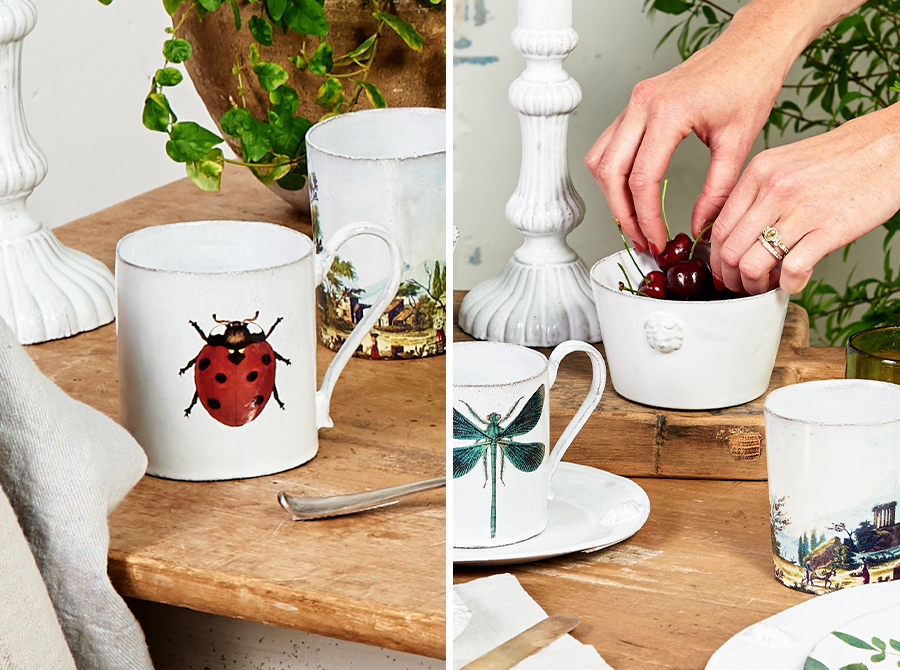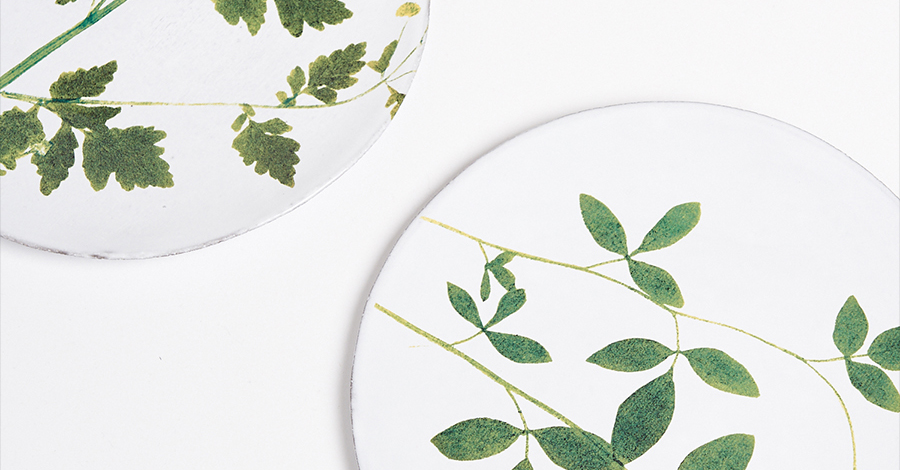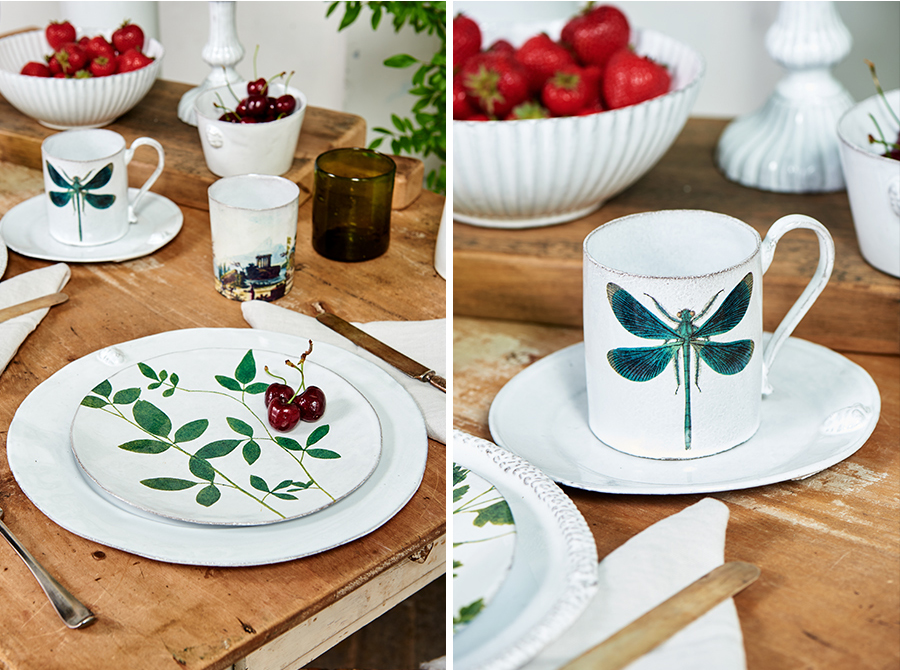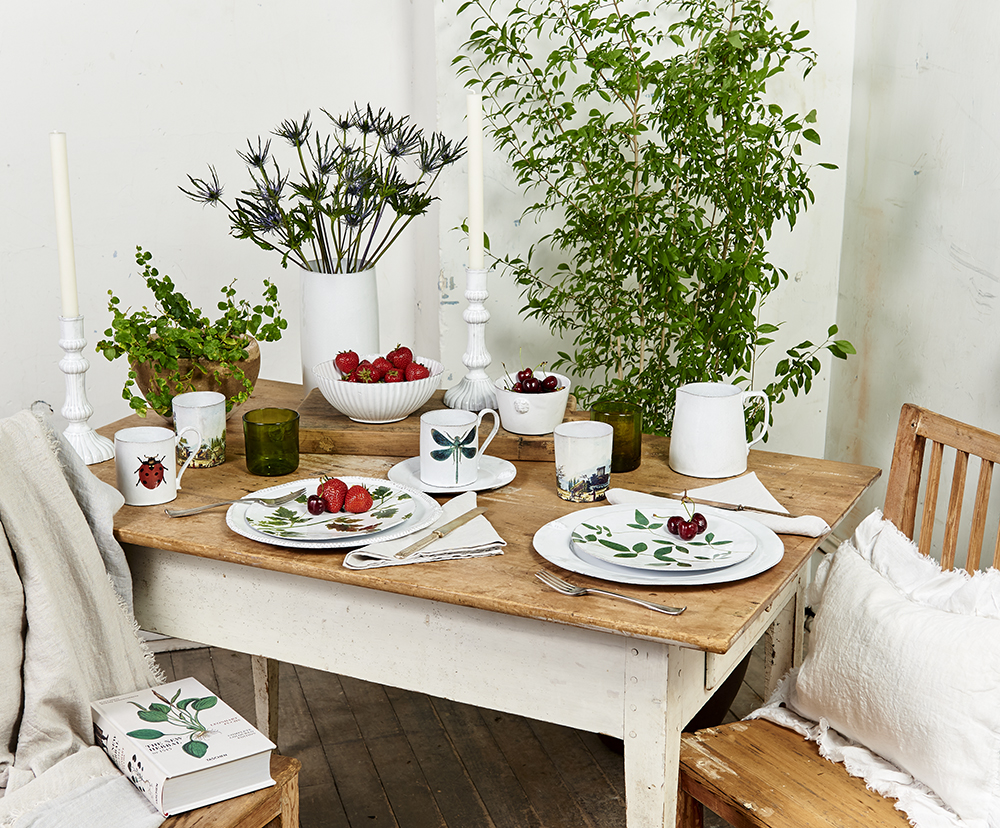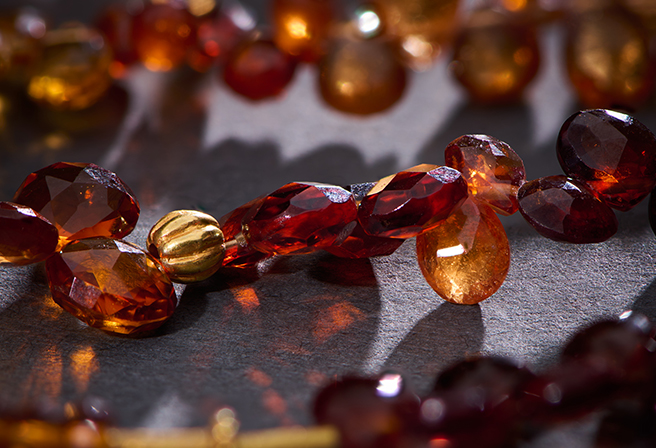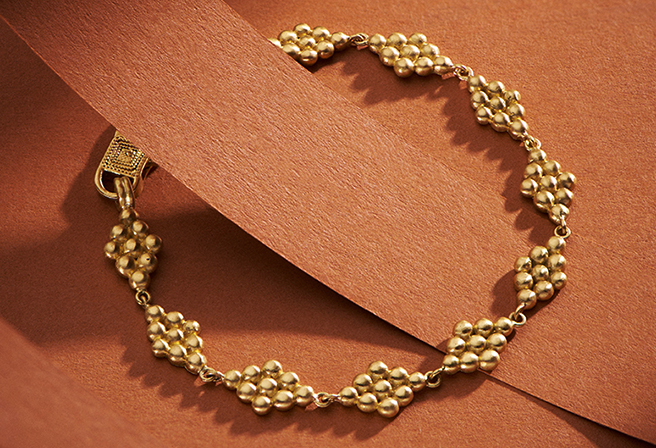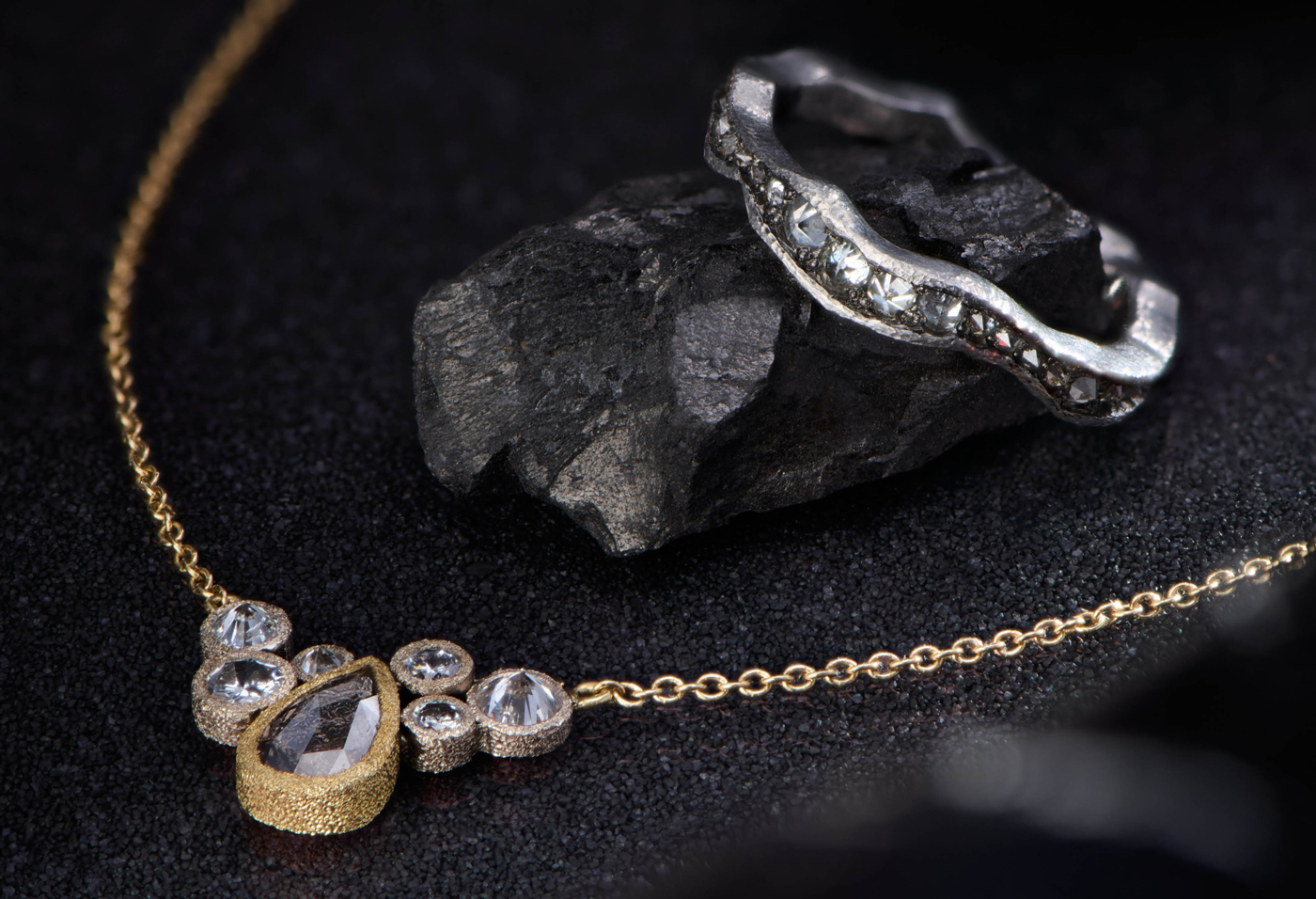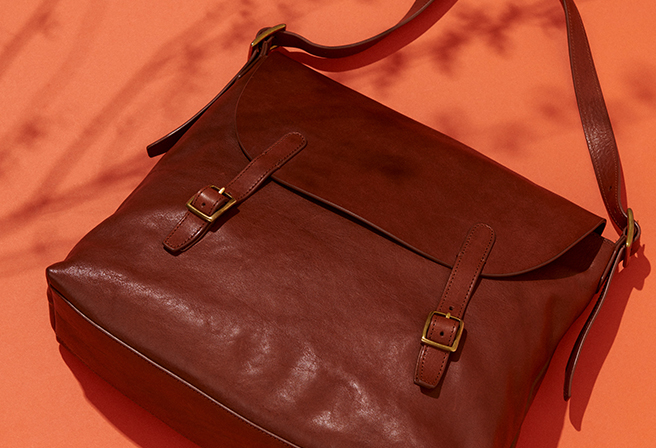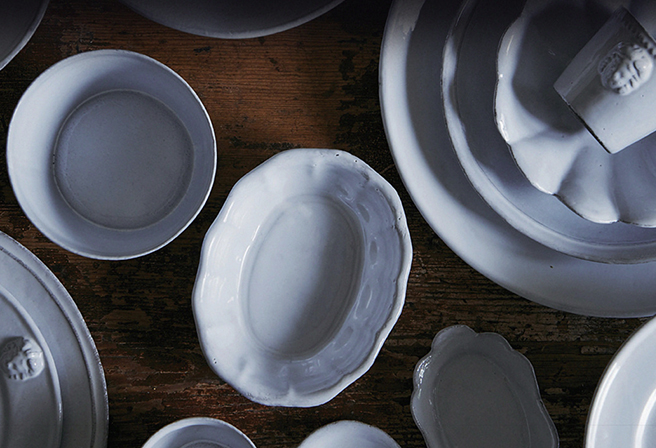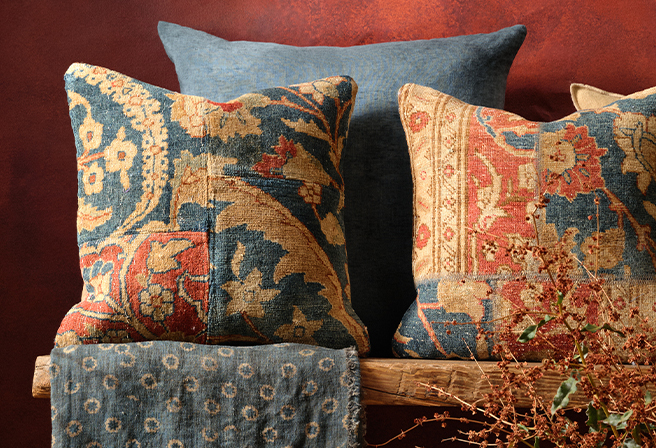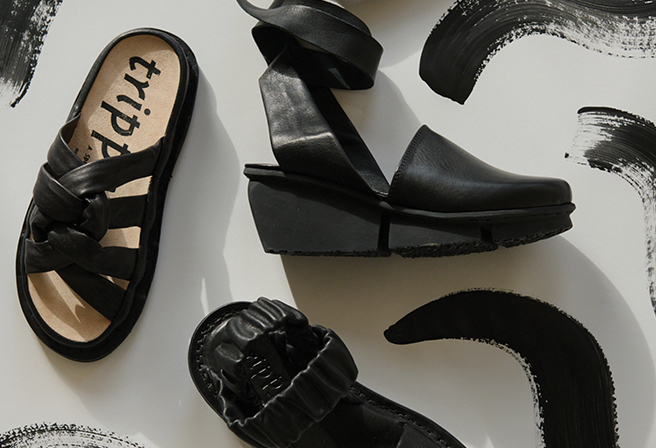John Derian’s passion as a designer was borne out of his love for vintage prints. His obsession began when he was in his 20’s when he stumbled on boxes of prints at a flea market in Salem, Massachusettes. Struck by the vibrancy and charm in each illustration, he began collecting them. A few years later he found himself working at a design shop co-owned by Apple Parish Bartlet. It was there that John sold items he assembled, and in 1989 he started thinking about what he more he could create. Somewhere between pondering the answer to that question and frequenting flea markets, it struck him: decoupaged plates.
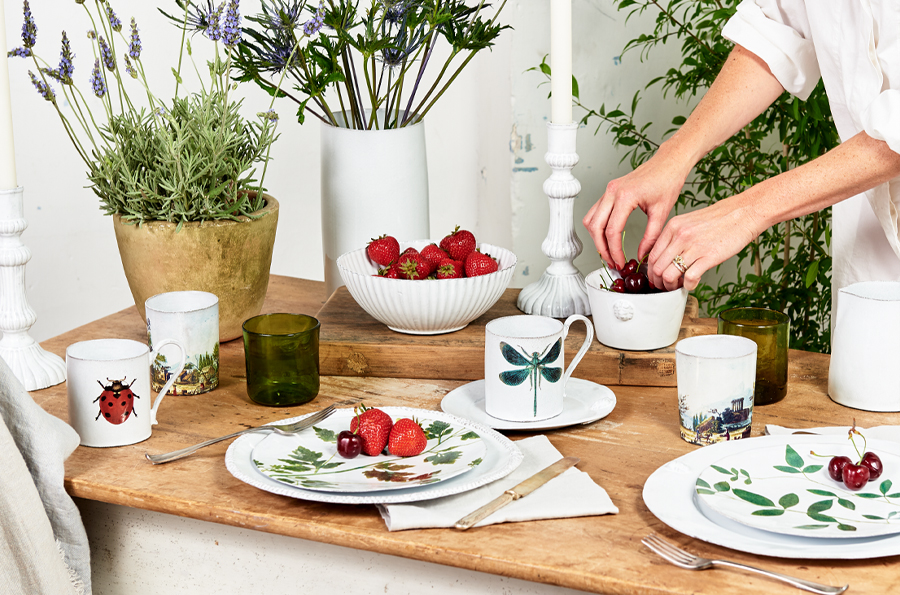
Decoupage itself is a craft where paper decor is affixed to hard surfaces with glue and varnish. Simple cut-outs can enhance any home goods, and they have been plastered on everything from furniture to dinnerware since the art form started sometime in the 18th century. Decoupage was popular among artisans in Florence, Italy, and used in combination with other techniques such as gold leaf and carved wood.
Once Derian discovered how he could expand on his passion for prints, he began making decoupaged clear glass plates, trays and bowls. Within days he had thousands of dollars worth of orders. His business has been growing since, and he has been deemed a “decoupage maestro” by everyone from the likes of Elle Décor and Vanity Fair to The New York Times.
It only seems fitting that John Derian and Astier de Villatte would team up in 2011 to add John’s iconic collected imagery to Astier de Villatte’s classic tableware. The 19th-century illustrations and patterns complement Astier’s handmade ceramics which are also reminiscent of that era.
There is a notion surrounding ceramics that creators should prioritize the never-ending search for perfection. For hundreds of years, alchemists, craftsmen and chemists devoted themselves to creating silkier textures, greater translucency and durability. Although each of these can be important facets of well-made ceramics, the focus on perfection hinders the individuality that is inherent in handmade items.
This is why in spite of their 18th and 19th-century inspirations, Astier de Villatte works with a laissez faire approach to design. They aren’t interested in the modern idea of perfection we have grown accustomed to. Rather, Astier de Villatte creates tableware that is delightfully off-kilter, and commemorates the hands that made it. Although the illustrations that John Derian uses are not wholly unique, as the prints are copied and duplicated for multiple uses, there is something that feels singular about them. In many ways, it feels as though the pieces created by their collaboration tell a story and carry a history that spans across centuries and brings it directly into your home.
